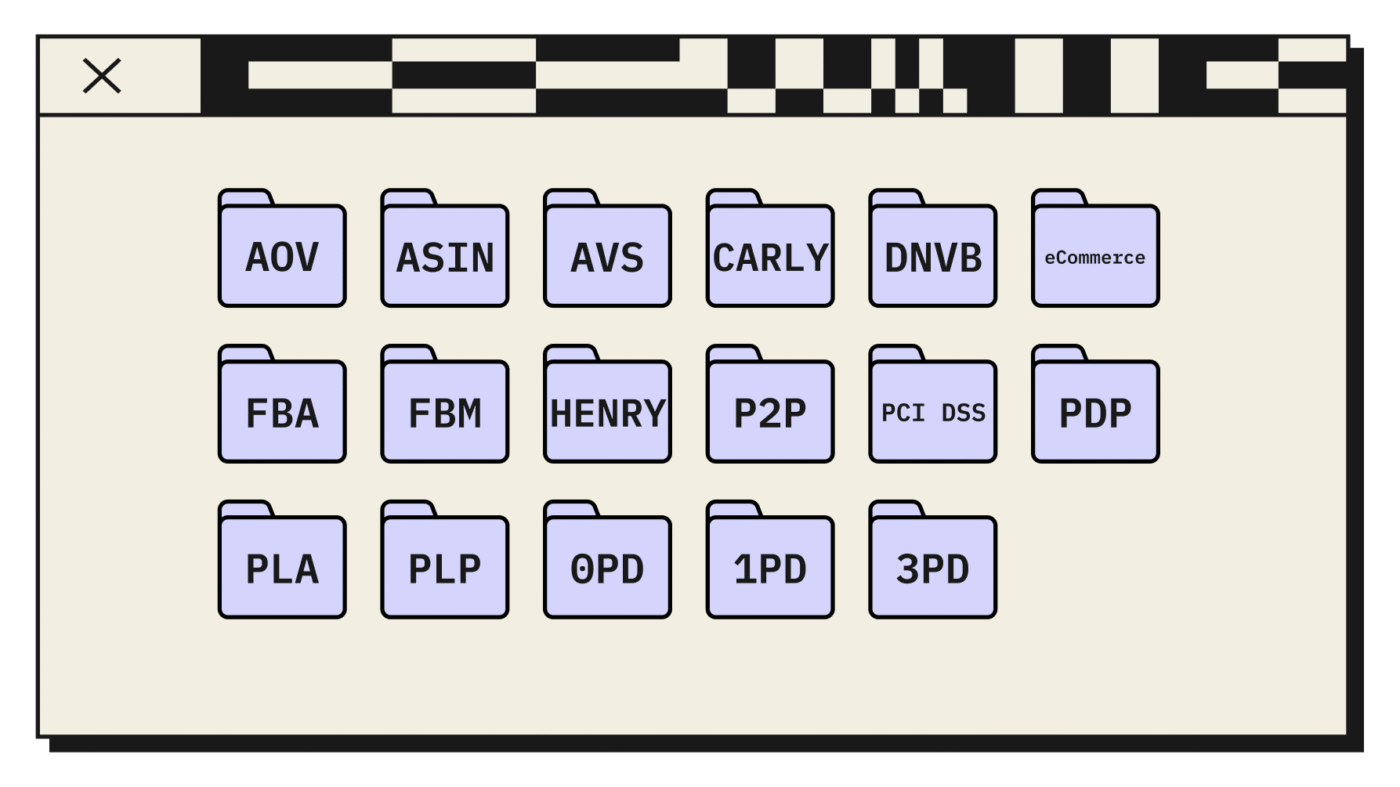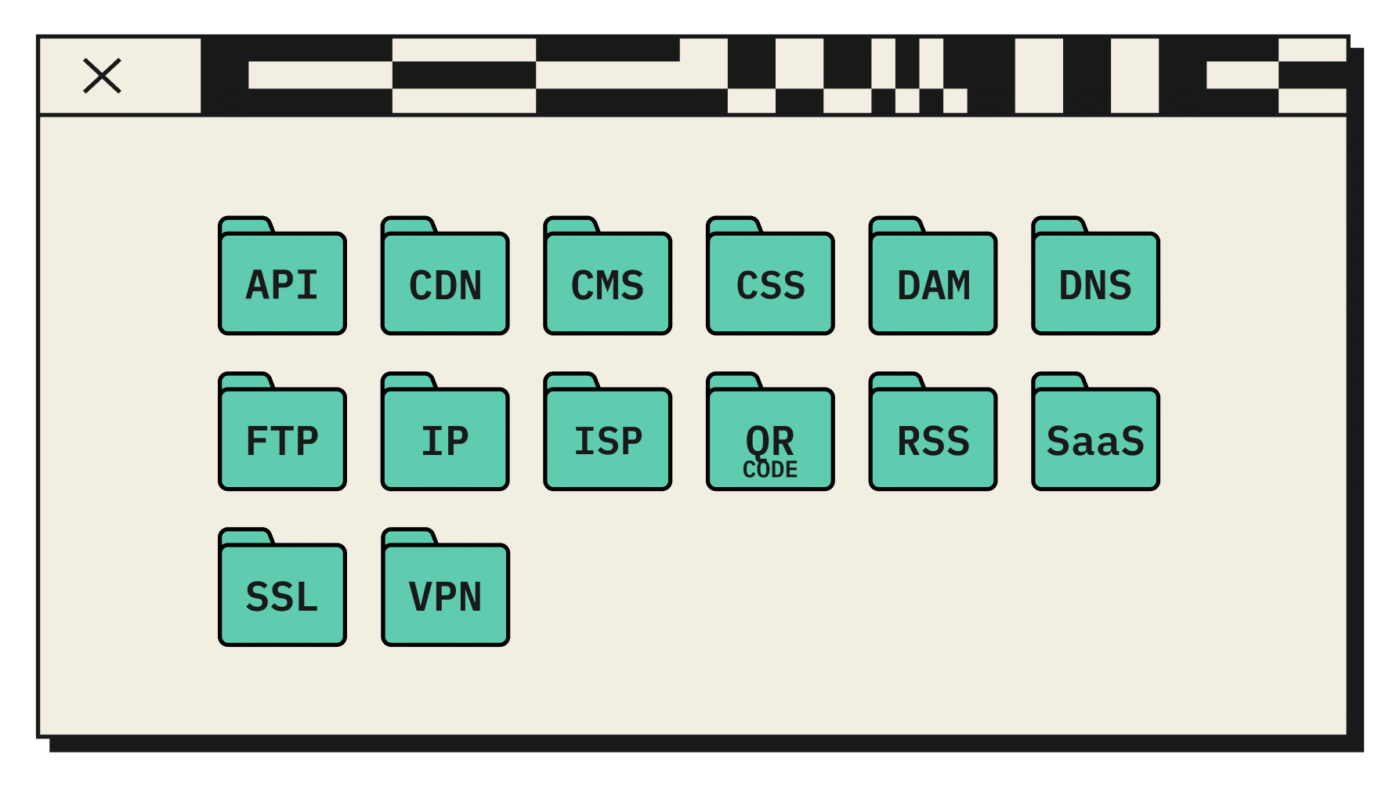ECOMMERCE COURSE
150+ eCommerce Acronyms & Abbreviations: The Ultimate Guide for eCommerce Learners & Professionals
Learn the Language of Online Business with NiOSDiT — Kolkata’s Best eCommerce Training Institute
Whether you’re a student looking for eCommerce courses after 12th, a business owner exploring eCommerce business training in Kolkata, or an aspiring seller eager to start your Amazon or Flipkart eCommerce business, mastering eCommerce terminology is your first step toward success.
At NiOSDiT, Kolkata’s leading eCommerce training institute, we help learners decode the business language of the digital marketplace. This comprehensive guide simplifies over 150 eCommerce acronyms and abbreviations—from marketing and analytics to finance, logistics, and technology—making it easier for you to navigate the world of digital commerce confidently.
Why Learn eCommerce Acronyms?
In the ever-growing eCommerce industry, acronyms are more than just shortcuts—they’re the key to effective communication and professional growth. Whether it’s SEO, PPC, ROI, or FBA, understanding these terms helps you interpret business strategies, analyze reports, and communicate with marketing teams or clients.
Much like learning a new language, knowing eCommerce abbreviations can boost your confidence, improve efficiency, and open up career opportunities across top platforms like Amazon, Flipkart, Meesho, eBay, and many more.
Tips to Remember & Use Acronyms Easily
At NiOSDiT, our eCommerce full course and digital business training modules teach you not only how to use these terms but also how to apply them in real-world business situations. Here are a few quick ways to retain what you learn:
- Use Mnemonics: Create simple word associations for key acronyms.
- Apply Practically: Use them in your daily communication or project work.
- Create Flashcards: List terms like ROI, CPC, AOV, or SEO with meanings.
- Ask Experts: During our live sessions, trainers help clarify each abbreviation with case studies.
Popular eCommerce Acronyms Every Learner Should Know
eCommerce & DTC Acronyms

AOV: Average Order Value
Average amount of money spent per purchase on a website or in a store
ASIN: Amazon Standard Identification Number
Unique code letter or numbers assigned by Amazon to products listed on its marketplace
AVS: Address Verification Service
Software used to authenticate the address of a person or company for credit card transactions
CARLY: Can’t Afford Real Life Yet
Consumers who lack financial freedom, possess some disposable income, and fluctuate their tastes
DNVB: Digitally Native Vertical Brand
Company that operates primarily online and control at least a portion of its supply chain and production
eCommerce: Electronic Commerce
Buying and selling of goods or services over the internet, encompassing everything from shopping to payments
FBA: Fulfillment By Amazon
Service that allows third-party sellers to store products in Amazon’s fulfillment centers and have them shipped
FBM: Fulfillment by Merchant
Fulfillment method where Amazon sellers manage and ship orders to customers themselves
HENRY: High Earner Not Rich Yet
Term used to describe individuals who have high incomes but have not yet accumulated significant wealth
P2P: Peer-to-Peer
Digital marketplaces where users can purchase items directly from one another — e.g., Craigslist or eBay
PCI DSS: Payment Card Industry Data Security Standard
Set of security standards for organizations that handle credit cards from the four major card networks
PDP: Product Description Page, or Product Page
Page on a website that provides detailed information about a specific product — features, specifications, and price
PLA: Product Listing Ad
Individual ad unit within Google Shopping consisting of an image, description, price, and other extensions
PLP: Product Listing Page
Webpage featuring a collection of products, usually with information about each and the option to purchase
0PD: Zero-Party Data
Data that is proactively shared by customers with a company — e.g., preferences, surveys, and quizzes
1PD: First-Party Data
Data collected directly from customers or users by a company for its own use — e.g., onsite or purchase history
3PD: Third-Party Data
Data that is collected, shared, and sold by companies that do not have a direct relationship with the end customer
Marketing & Advertising Acronyms

A/B Testing: A (Control) vs B (Variant)
Testing: Method of comparing two versions of a webpage or app to determine which performs better — aka, split testing
ACOS: Advertising Cost of Sales
Percentage of total revenue devoted to marketing (ad spend) — i.e., the inverse of ROAS
CAC: Customer Acquisition Cost
Total cost of acquiring a customer, including marketing and sales expenses
CPA: Cost Per Action
Pricing model in which an advertiser pays for specified action — e.g., making a purchase or filling out a form
CPC: Cost Per Click
Amount of money an advertiser pays each time a user clicks on its ad in a PPC marketing campaign
CPM: Cost Per Thousand
Pricing model in which an advertiser pays for every thousand impressions (views) of their ad
CR, CRV: Conversion Rate
Percentage of website visitors or app users who take a desired action (small number divided by big number)
CRO: Conversion Rate Optimization
Strategies designed to improve the percentage of website visitors or app users who take a desired action
CSE: Comparison Shopping Engine
Search engine that allows shoppers to compare product prices from multiple retailers on a single platform
CTA: Call-to-Action
Request for a user to take a specific action — e.g., signing up for a newsletter or making a purchase
CTR: Click-Through Rate
Percentage of users who click on a particular link — e.g., an ad or search result
CVR: Conversion Rate
Percentage of visitors to a website who complete a desired action — making a purchase or filling out a form
DAS: Direct-to-Consumer Advertising Spend
Amount of money spent on advertising directly to consumers, rather than through retailers or distributors
DFA: Data Feed Optimization
Improving structured product data for channels such as Google Shopping, Amazon, or Facebook
ESP: Email Service Provider
Platform that offers email marketing or communication services for businesses or individuals
GA, GAU: Google Analytics (Universal)
Tracking service offered by Google that reports website visitors, bounce rate, user behavior, and other metrics
GA4: Google Analytics 4
Google’s event-based update to GA released in late 2020 and replacing GA in July of 2023
GTM: Go-to-Market
Strategy and tactics a company uses to bring a new product or service to market
LTV: Customer Lifetime Value
Total value a customer generates over the course of their relationship with a company; also used, CLTV or CLV
LTV:CAC: Lifetime Value to Customer Acquisition Cost Ratio
Total revenue generated by a customer compared to the cost of acquiring that customer
MER: Marketing Efficiency Ratio
High-level measurement of the overall performance of marketing efforts — aka, blended ROAS
MMS: Multimedia Messaging Service
Marketing texts that include rich media like video, images, slideshows, audio, and GIFs
MTA: Multi-Touch Attribution
Method used to assign credit to marketing touchpoints that led to a sale, using data-driven analysis
nCAC: New Customer Acquisition Cost
Cost associated with acquiring a net-new customer (subset of CAC)
PPC: Price Per Click, or Pay Per Click
Digital advertising model where advertisers pay each time a user clicks on their ad — c.f., CPC
ROAS: Return on Ad Spend
Revenue generated from advertising relative to the amount spent expressed as a whole number
SEM: Search Engine Marketing
Paid promotion of a website or SKU (product) on search engines — i.e., Google Ads or Google Shopping
SEO: Search Engine Optimization
Practice of optimizing a website to improve its organic ranking in search engine results pages
SERP: Search Engine Results Page
Online listing of web pages generated by a search engine in response to a user’s query
SMS: Short Message Service
Plain-text-only marketing messages (texts) that can include characters, numbers, and links
SSM: Social Media Marketing
Promoting a brand, product, or service through social-media platforms — both paid and organic methods
UGC: User-Generated Content
Videos and images created by users of a product or service, rather than the company itself
WOM: Word of Mouth
Informal exchange between individuals, often used to describe the spread of news or recommendations
Business, Sales & Retail Acronyms

ATC: Average Transaction Cost
Average cost of a transaction, including any fees or expenses
AUR: Average Unit Retail
Average price at which a product is sold to consumers
B&M: Brick-and-Mortar
Traditional physical store or shop, as opposed to an online business
B2B: Business-to-Business
Transactions between businesses, rather than between businesses and individual consumers
B2C: Business-to-Consumer
Transactions between businesses and individual consumers, rather than between businesses
BD: Business Development
Department or process of pursuing new revenue opportunities — e.g., partnerships, investments, and acquisitions
BOPIS: Buy Online Pickup Instore
Fulfillment method where customers order online, then retrieve their items at a physical store
BORIS: Buy Online Return In Store
Reverse logistics method where customers order online, then return items at a physical store
CPO: Certified Pre-Owned
Used product that has been verified by the manufacturer or a third party to be in good working condition
DST: Direct Sales Team
Individuals within a company responsible for selling directly to customers; more commonly, daylight savings time
EDI: Electronic Data Interchange
Digital transfer of business documents in a standard format — most commonly used in wholesale B2B
GMV: Gross Merchandise Volume
Total value of all products sold on a platform or through a company’s channels, excluding any returns or discounts
IPO: Initial Public Offering
First sale of stock by a company to the public, enabling the company to raise capital from public investors
MAP: Minimum Advertised Price
Lowest price a retailer is allowed to sell a product for as set by the manufacturer or distributor
NSO: New Store Opening
Process of launching a new retail location — scouting, designing, constructing, hiring, training, and marketing.
OTB: Open-to-Buy
Amount of money a retailer has to spend on inventory, based on sales projections and current levels
PO: Purchase Order
Commercial document issued by a buyer to a seller, indicating the types, quantities, and agreed prices
POS: Point of Sale
Where a transaction is completed — e.g., at a cash register in a store or checkout for an eCommerce store
PR: Public Relations
Building relationships between organizations and audiences, through communication and media outreach
SLA: Service-Level Agreement
Contract outlining agreed-upon services to be provided — e.g., response time and uptime
SSS: Same-Store Sales
Sales performance — growth or decline — of a company’s stores that have been open for at least a year
TAM: Total Addressable Market
Cumulative demand for a product or service, including all potential customers and revenue streams
ToS: Terms of Service
Legally-binding agreements outlining the rules and regulations for using a product or service
UPT: Units Per Transaction
Average number of items sold per transaction, indicating the effectiveness of upselling and cross-selling
Customer Service Acronyms

CCC: Customer Care Center
Location or department within a company that is responsible for providing customer service and support
CDP: Customer Data Platform
Software that centralizes customer data from all sources to help businesses create a unified and single view
CRM: Customer Relationship Management
Software used to operate customer interactions and data throughout the lifecycle — aka, CRM system
CRR: Customer Retention Rate
Percentage of customers who continue to do business with a company over a given period of time
CS: Customer Support
Assisting customers through various channels to answer questions and resolve complaints
CSAT: Customer Satisfaction
Measure of how satisfied customers are with a company’s products or services
CSX: Customer Service Experience
Overall experience of a person’s interactions with CS — needs met, problems solved, and emotions
CX: Customer Experience
Overall perception of a brand, product, or service — from initial contact to post-purchase
NPS: Net Promoter Score
Customer satisfaction metric (0–10) of the likelihood someone will recommend a product or service to others
QA: Quality Assurance
In software, ensuring that a product or service meets specified requirements and standards
QC: Quality Control
In retail, ensuring that a product or service meets specified requirements and standards
UI: User Interface
Visual and interactive elements of a software application, website, or other digital product
UX: User Experience
Overall experience of a person using a product, including both utility and emotions
Finance & Accounting Acronyms

ARR: Annual Recurring Revenue
Projected revenue that a company expects to receive on a recurring basis over the course of a year
CAGR: Compound Annual Growth Rate
Rate at which an investment’s value increases over a number of years, assuming profits are reinvested
CAPEX: Capital Expenditures
Costs associated with acquiring, upgrading, or maintaining physical assets — buildings, equipment, technology
CM: Contribution Margin
Revenue after variable expenses have been deducted to cover fixed costs (OPEX) and generate profit
COGS: Cost of Goods Sold
Total cost of producing the goods that a company sells, including the cost of materials and labor
CPA: Certified Public Accountant
Licensed financial expert for consulting, compliance, and taxes; not to be confused with cost per acquisition
CVC: Card Verification Code
Three or four-digit security code printed on a credit or debit card to verify its authenticity during a transaction
EBITDA: Earnings Before Interest, Taxes, Depreciation, and Amortization
Profits excluding non-operating expenses like taxes as well as losses from assets that deteriorate over time
EOD, EOW: End of Day, End of Week
Close of business (COB), typically when daily or weekly accounting and processing tasks are completed
ETA: Estimated Time of Arrival
Predicted date at which a particular shipment or other item is expected to arrive at its destination
GMROI: Gross Margin Return on Investment
Profitability of a product or service, taking into account the gross margin and the amount invested in the product
MER: Minimum Effective Rate
Lowest cost per acquisition at which a marketing campaign is still considered to be profitable
MRR: Monthly Recurring Revenue
Projected revenue that a company expects to receive on a recurring basis each month
OPEX: Operating Expenses
Fixed costs associated with running a business on a day-to-day basis — salaries, rent, utilities
P&L: Profit and Loss
Financial statement (balance sheet) summarizing income and expenses over a specific period of time
ROI: Return on Investment
Total revenue from an investment against its costs, expressed as a percentage, ratio, or multiplier
TTM: Trailing Twelve Months
Financial metric that refers to the performance of a company over the past 12 months
VAT: Value-Added Tax
Consumption tax added to a product or service’s price, most common in European governments
YoY: Year Over Year
Comparison of performance for one year to the same period in the previous year to identify trends and growth
YTD: Year to Date
Period of time from the beginning of the current year up to the present day
Operations & Supply Chain Acronyms

1PL: First-Party Logistics
Fulfillment and shipping run by a company’s own in-house department or warehouse
3PL: Third-Party Logistics
External company used to outsource shipping and fulfillment to customers
BOM: Bill of Materials
List of the materials, parts, and components required to manufacture a product
ERP: Enterprise Resource Planning
Software that manages and integrates all core functions — e.g., finance, HR, and supply chain management
FEFO: First Expired, First Out
Inventory turnover based on a model of first products expired are the first products sold
FIFO: First In, First Out
Inventory turnover based on a model of first products purchased are the first products sold
FOB: Free on Board
Entity responsible for paying transportation costs and assuming ownership of goods in international trade
IMS: Inventory Management System
Software system used to manage and track inventory (goods and stock) in a business
ITR: Inventory Turnover Ratio
Measure of how efficiently a company purchases and then sells stock; COGS ÷ number of units
LIFO: Last In, Last Out
Inventory turnover based on a model of last products purchased are the first products sold
MMU: Minimum Marketable Unit
Smallest unit of a product that can be sold and still be considered viable by the market
MOQ: Minimum Order Quantity
Smallest quantity of a product that a supplier is willing to sell to in a single order
MPN: Manufacturer Part Number
Unique identifier (code) assigned by a manufacturer to a specific product or part
OMS: Order Management System
Software system used to manage and track orders and inventory in a business
OOS: Out of Stock
Product that is not currently available for purchase
PIM: Product Information Management
Software used to ensure consistency, accuracy, and completeness of product details across all channels
PLM: Product Lifecycle Management
Overseeing a product from conception through design, manufacturing, delivery, and disposal
RMA: Return Merchandise Authorization
Processes and systems used to track, manage, and verify returns as well as exchanges
SKU: Stock Keeping Unit
Unique identifier for a product in a company’s inventory used to track and manage stock
UPC: Universal Product Code
Barcode that is used to identify and track products, typically in retail settings
WMS: Warehouse Management System
Software used to track inventory in a warehouse or distribution center; warehousing management system
WOS: Wholesale Order System
Software used to place and manage orders between wholesalers and retailers (distributors)
Human Resources Acronyms

CDA: Chief Data Officer
Executive responsible for the governance, management, and utilization of an organization’s data assets
CEO: Chief Executive Officer
Executive responsible for major corporate decisions, managing operations, and leading strategy development
CFO: Chief Financial Officer
Executive responsible for a company’s financial operations — including planning, budgeting, and accounting
CIO: Chief Information Officer
Executive responsible for information technology (IT) and ensuring that they align with business objectives
CMO: Chief Marketing Officer
Executive responsible for overseeing marketing, including branding, advertising, and promotion
COO: Chief Operating Officer
Executive responsible for the day-to-day operations of a company and coordinating between departments
CRO: Chief Revenue Officer
Executive responsible for growing income and income streams — i.e., driving sales
CSO: Chief Strategy Officer
Executive responsible for guiding a company’s overall business strategy, and communicating that strategy to the organization
CTO: Chief Technology Officer
Executive responsible for guiding a company’s technological strategy, innovation, and implementation
FTE: Full-Time Employee
Employee whose number of hours worked entitle them to all benefits and compensation — aka, headcount
KPI: Key Performance Indicator
Metric chosen to gage a specific aspect of a business’s performance — e.g., revenue or customer satisfaction
OOO: Out of Office
Indicates someone is not available to respond because they are temporarily away from work
PTO: Paid Time Off
Policy allowing employees to take time off while still being paid — e.g., vacation, sick leave, or personal reasons
VA: Virtual Assistant
Self-employed professional who provides administrative, technical, or creative help remotely (personal assistant)
Technological Potpourri

API: Application Programming Interface
Set of protocols and tools for building software applications and the connections between them
CDN: Content Delivery Network
Distributed network of servers that delivers digital content based on users’ geographic locations
CMS: Content Management System
Software system used to create, manage, and publish digital content — e.g., website content or blog posts
CSS: Cascading Style Sheets
Code used for describing the presentation of a web-based document written in markup language
DAM: Digital Asset Management
Processes and systems used to manage and organize digital media — images and videos
DNS: Domain Name System
Translates written domain names into IP addresses for computers to identify each other on the internet
FTP: File Transport Protocol
Network protocol used to transfer files from one host to another over a TCP-based network (the internet)
IP: Internet Protocol
Rules governing how data is transmitted over the internet; unique IP addresses allow devices to communicate
ISP: Internet Service Provider
Company that provides internet access to individuals and organization
MAP: Marketing Automation Platform
Software that streamlines the marketing process used to support digital campaign planning, delivery, and optimization
QR Code: Quick Response Code
Two-dimensional barcode that can be scanned using a smartphone or QR code reader app to access information
RSS: Really Simple Syndication
Method used to notify new or updated content such as blog posts, news articles, or podcasts; RSS feed or RSS reader
SaaS: Software as a Service
Licensing and delivery model in which software is provided on a subscription basis and hosted centrally in the cloud
SSL: Secure Sockets Layer
Protocol used to encrypt sensitive data — such as credit card information — between browsers and servers
VPN: Virtual Private Network
Non-public access to the internet, often used to protect the user’s identity and improve security
Learn eCommerce the Right Way at NiOSDiT
NiOSDiT offers industry-focused eCommerce training in Kolkata, covering everything from Amazon and Flipkart marketplace setup to Meesho and Blinkit ads, WordPress eCommerce website development, and Quick Commerce marketing.
Our eCommerce business learning course is designed for students, entrepreneurs, and freelancers who want to launch or scale their online business. The Amazon eCommerce course, Flipkart eCommerce course, and Meesho seller training modules include hands-on projects, real-time selling experience, and certification support.
If you’re looking for:
✅ Best eCommerce course in India
✅ eCommerce marketing course in Kolkata
✅ Quick Commerce training and Blinkit Ads module
✅ eBay Dropshipping full course with WordPress integration
✅ Landing Page eCommerce and WordPress website development
Then NiOSDiT is your all-in-one destination.
Why Choose NiOSDiT?
- 🧑🏫 Expert Trainers with real eCommerce business experience
- 🏆 100% Practical Training on Amazon, Flipkart, Meesho, Blinkit, and eBay
- 💼 Live Marketplace Projects
- 🌐 Learn WordPress eCommerce & Landing Page Optimization
- 📈 Build Your Own eCommerce Store from Scratch
Build Your Future in eCommerce
In today’s digital-first economy, understanding eCommerce acronyms, business terms, and marketing concepts is just the beginning. The real transformation happens when you can apply this knowledge to your business or career.
Join NiOSDiT — Kolkata’s Best eCommerce Institute — and start your journey to becoming a certified eCommerce professional. Whether your goal is to run your own online store, master Amazon or Flipkart eCommerce, or learn Quick Commerce and Dropshipping, we’ll guide you every step of the way.
📍 NiOSDiT – National Institute of Skill Development in Technology
Location: Kolkata, India
Courses Offered:
- eCommerce Full Course
- Amazon & Flipkart Seller Training
- Meesho eCommerce Course
- eBay Dropshipping Training
- Quick Commerce & Blinkit Ads Course
- WordPress eCommerce & Landing Page Design Course
Contact Us
📞 Phone / WhatsApp: +91 9748998368
📧 Email: niosdit@gmail.com
🌐 Website: www.niosdit.com
-
Best E-Commerce Training Course in Kolkata – Learn, Build & Grow with NiOSDiT

At NiOSDiT (National Institute of Skill Development & IT), we believe that practical skills build real careers. As one of the best e-commerce training institutes in Kolkata, we specialize in providing industry-oriented e-commerce courses designed for students, entrepreneurs, and professionals who want to thrive in the digital marketplace. Whether you’re a student looking for e-commerce…
-
150+ eCommerce Acronyms & Abbreviations: The Ultimate Guide for eCommerce Learners & Professionals

Learn the Language of Online Business with NiOSDiT — Kolkata’s Best eCommerce Training Institute Whether you’re a student looking for eCommerce courses after 12th, a business owner exploring eCommerce business training in Kolkata, or an aspiring seller eager to start your Amazon or Flipkart eCommerce business, mastering eCommerce terminology is your first step toward success.…
-
Best Website Design And Development Institute in Kolkata – NiOSDiT

If you are looking for the best web designing institute in Kolkata or a top graphic design institute in Kolkata, NiOSDiT (National Institute of Skill Development in IT) is your perfect destination. We are a Govt. Accredited Computer Training Centre (AITT & DITRP affiliated), offering professional website design and web development courses in Kolkata along…
